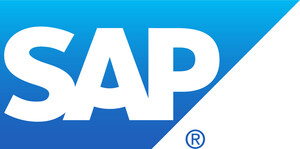WALLDORF, Germany, June 18, 2015 /PRNewswire/ -- SAP NEWSBYTE -- SAP SE (NYSE: SAP) today announced the CloudView survey and business value practice study developed by industry analyst firm IDC and sponsored by SAP, which shows how companies may be falling short in their cloud transformation journey. The study identifies key strategic issues and business processes to address the gaps.
"Customers have found that they have managed the first phase of moving into the cloud – they have educated themselves and sourced new capabilities necessary to begin the journey," said Robert Mahowald, program vice president, SaaS and Cloud Services, IDC. "The stumbling blocks are now at the managed and optimized level, with skill sets required that will allow the organization to focus on strategy versus day-to-day operations in faster time to provision new services, in reduced IT costs and perhaps, most importantly, in the ability to make more revenue."
The IDC study finds that many companies are naive about how mature their cloud strategy really is. A key reason is the significant shortage in necessary IT skills and strategic approach, and the business-process change required to get to the next level. Implementing measures for collaborative business and IT governance, establishing consistent processes to identify which applications can best benefit from cloud and targeted education and training will help close these gaps.
The study further finds that a cloud strategy is considered mature not only when a consistent enterprise-wide approach to cloud is driving business innovation, but specifically when the lines of business are involved up front in the process. Put simply, a collaborative approach between IT and the business, centered on the needs of the customer, is the single most important element of a mature cloud strategy.
Cloud maturity is the point in an organization's cloud transformation when it starts to reap real business benefits that go beyond IT efficiencies or TCO considerations. This includes developing net-new sources of revenue; engaging more deeply across employees, partners and customers; and using a more strategic and collaborative approach to IT that drives new value and greater competitive advantage.
Organizations that have a balanced use of cloud – the best mix of external sourcing and internal transformation – are those where business units have the freedom, flexibility and agility to respond quicker to customer needs to drive revenue. It includes having the IT organization right there with them as strategic enabler.
"Cloud is fast becoming a primary platform for business as organizations are freed from the constraints of building and maintaining their infrastructure and instead can focus on advancing their core business. IT runs a very real risk by not pulling in their business counterparts in their up-front cloud strategy," said Rob Glickman, vice president, SAP Cloud and Line of Business Marketing, SAP. "And business units must partner with IT as their strategic arm to help them serve their customer and win – if not, business units typically go rogue and create unwieldy silos of chaos that destroy customer value over time."
As businesses move up the maturity scale, they will increasingly look to vendors who can provide a more complete set of end-to-end workflows of mission-critical applications, coupled with deep knowledge and expertise across industries and lines of business.
Download a full copy of the IDC InfoBrief, sponsored by SAP, June 2015, here.
For more information, visit the SAP News Center. Follow SAP on Twitter at @sapnews.
Media Contact:
Janice Tsoules, +1 (650) 223-4817, [email protected], EDT
Any statements contained in this document that are not historical facts are forward-looking statements as defined in the U.S. Private Securities Litigation Reform Act of 1995. Words such as "anticipate," "believe," "estimate," "expect," "forecast," "intend," "may," "plan," "project," "predict," "should" and "will" and similar expressions as they relate to SAP are intended to identify such forward-looking statements. SAP undertakes no obligation to publicly update or revise any forward-looking statements. All forward-looking statements are subject to various risks and uncertainties that could cause actual results to differ materially from expectations. The factors that could affect SAP's future financial results are discussed more fully in SAP's filings with the U.S. Securities and Exchange Commission ("SEC"), including SAP's most recent Annual Report on Form 20-F filed with the SEC. Readers are cautioned not to place undue reliance on these forward-looking statements, which speak only as of their dates.
Logo - http://photos.prnewswire.com/prnh/20110126/AQ34470LOGO
SOURCE SAP SE
Related Links
WANT YOUR COMPANY'S NEWS FEATURED ON PRNEWSWIRE.COM?
Newsrooms &
Influencers
Digital Media
Outlets
Journalists
Opted In




Share this article